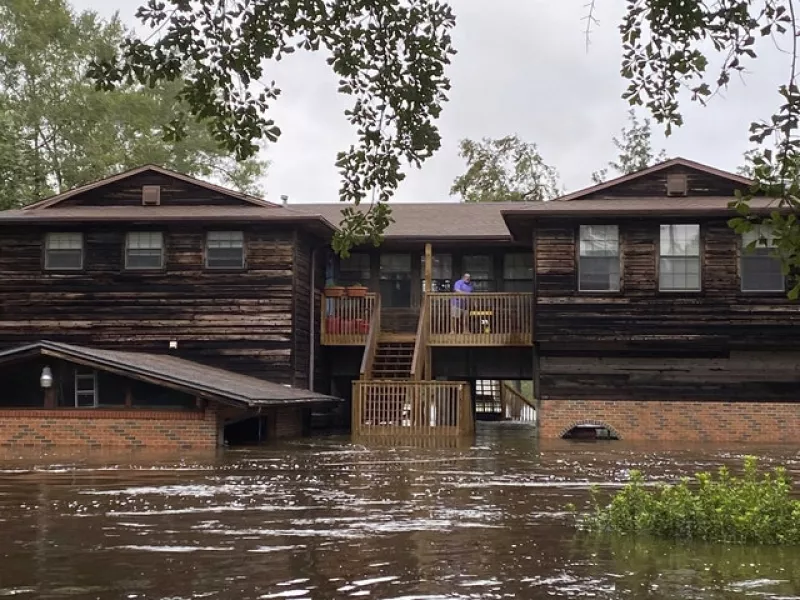Across southern Alabama and the Florida Panhandle, homeowners and businesses began cleaning up and officials inspected bridges and highways for safety.
The clean-up begins a day after Sally rolled through with 105 mph winds, a surge of seawater and 1 to 2 1/2 feet (0.3 to 0.8 metres) of rain in many places before it began to break up.
Sally’s remnants were over South Carolina on Thursday afternoon and were expected to move into the Atlantic within 24 hours.
A rainmaker to the end, what was left of the storm was forecast to dump as much as eight inches (20 centimetres) in isolated areas in the Carolinas and southern Virginia, prompting warnings of widespread flash flooding and “moderate” river flooding.
In hard-hit Pensacola and surrounding Escambia County, where Sally’s floodwaters had coursed through downtown streets and lapped at car door handles on Wednesday before receding, authorities went door-to-door to check on residents and warn them they were not out of danger.
“Please, please, we’re not out of the woods even if we’ve got beautiful skies today,” said Escambia County emergency manager Eric Gilmore.
Laura Coale, communications director for Escambia County, Florida, said rescue crews were taking a secondary pass through flooded areas on Thursday afternoon to see if anyone who declined to leave earlier would like to evacuate.
Officials’ biggest concern was keeping people off the roads so power trucks can work and people can clean debris safely.
Florida governor Ron DeSantis urged Panhandle residents not to let their guard down even though the hurricane had passed.

“You’re going to see the rivers continue to rise,” Mr DeSantis said after an aerial tour of the Panhandle.
Crews carried out at least 400 rescues in Escambia County, Florida, by such means as high-water vehicles, boats and water scooters, authorities said.
Rescuers focused their effort on Innerarity Point, a narrow strip of land close to Pensacola that is home to waterfront homes and businesses.
Floodwaters covered the only road out, though authorities said no one was in immediate danger.
The Florida National Guard said it had deployed about 500 soldiers and airmen to help local authorities evacuate 113 people, though it did not say when and where the rescues took place.
In Alabama, on both sides of Mobile Bay, National Guard soldiers from high-water evacuation teams used big trucks to rescue at least 35 people, authorities said.
At least one death, in Alabama, was blamed on the hurricane.

More than 427,000 homes and businesses in Florida, Alabama and Georgia were without power as of Thursday afternoon, down from more than a half-million a day earlier.
A section of the main bridge between Pensacola and Pensacola Beach collapsed after it was hit by a barge that broke loose during the storm.
At a downtown marina, at least 30 sailboats, fishing boats and other vessels were found clumped together in a mass of fibreglass hulls and broken docks.
Some boats rested atop sunken ones. The hurricane also drove two large ferry boats into a concrete seawall and left them grounded.
Also on Thursday, the National Hurricane Centre said a new tropical depression formed in the southwestern Gulf of Mexico.
Forecasters said the depression could become a tropical storm as it moves slowly over the western Gulf during the next few days.
Meanwhile, Hurricane Teddy strengthened to an immensely powerful Category 4 storm in the Atlantic on Thursday. The storm currently poses no threat to land.







